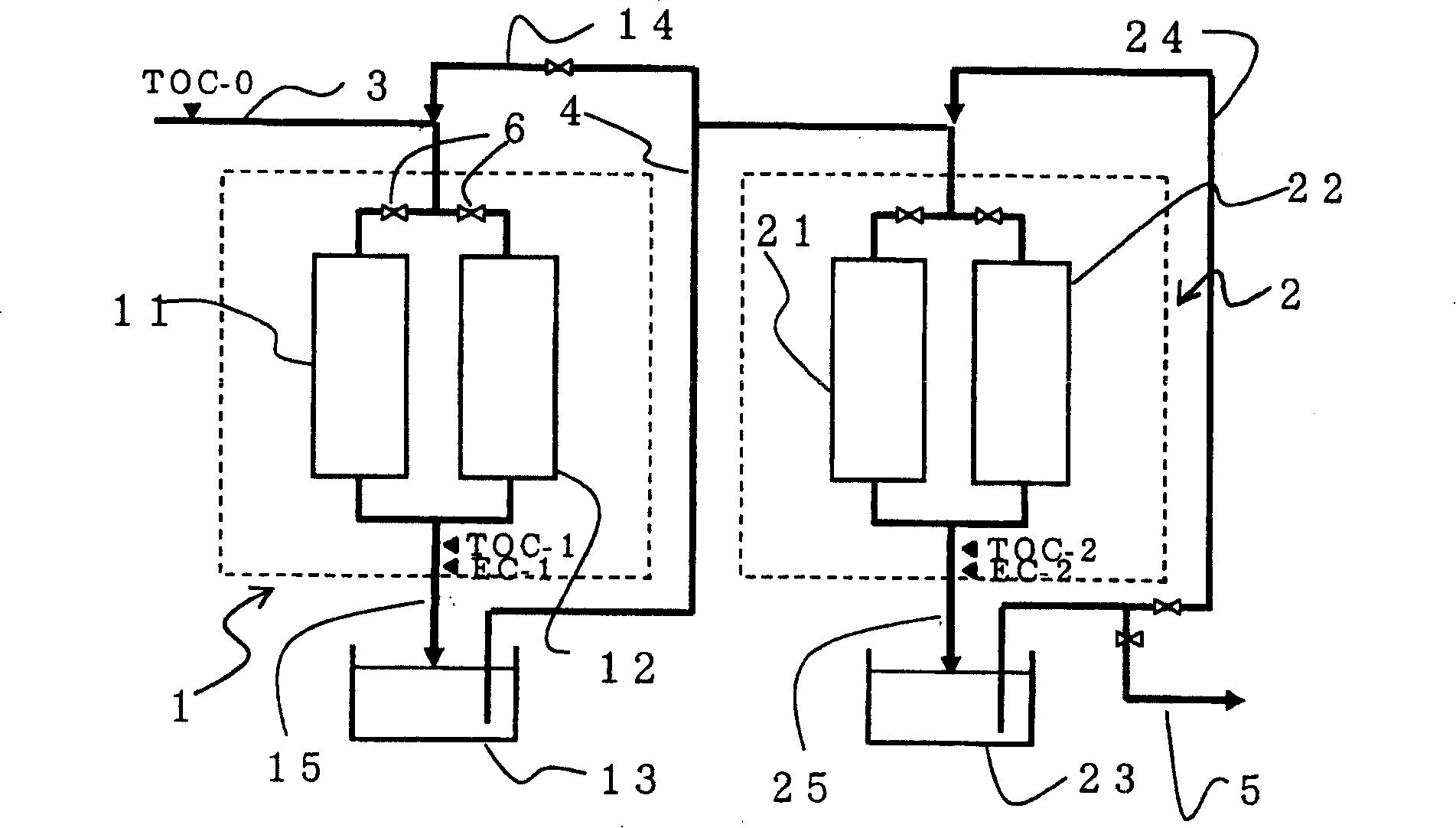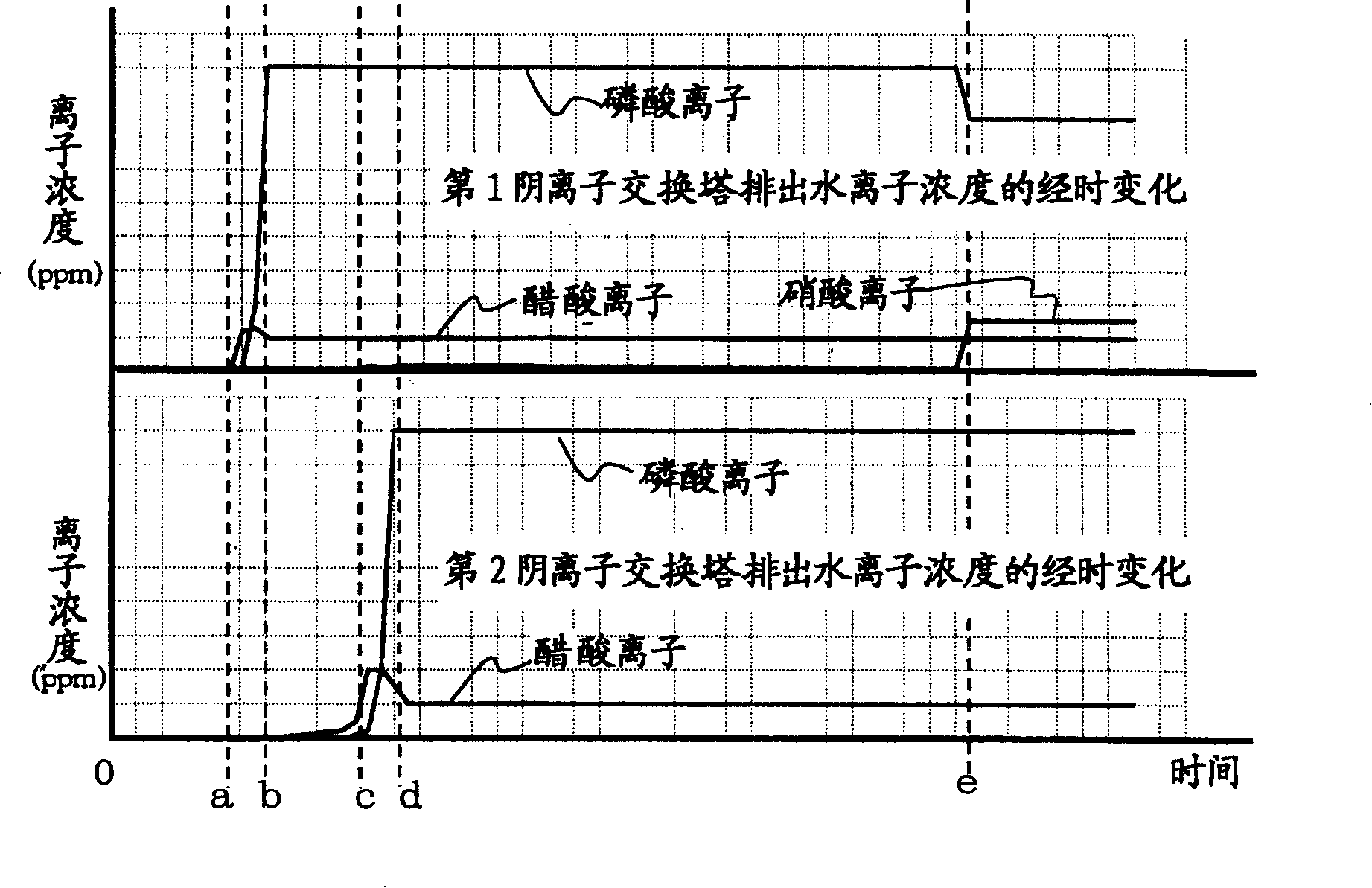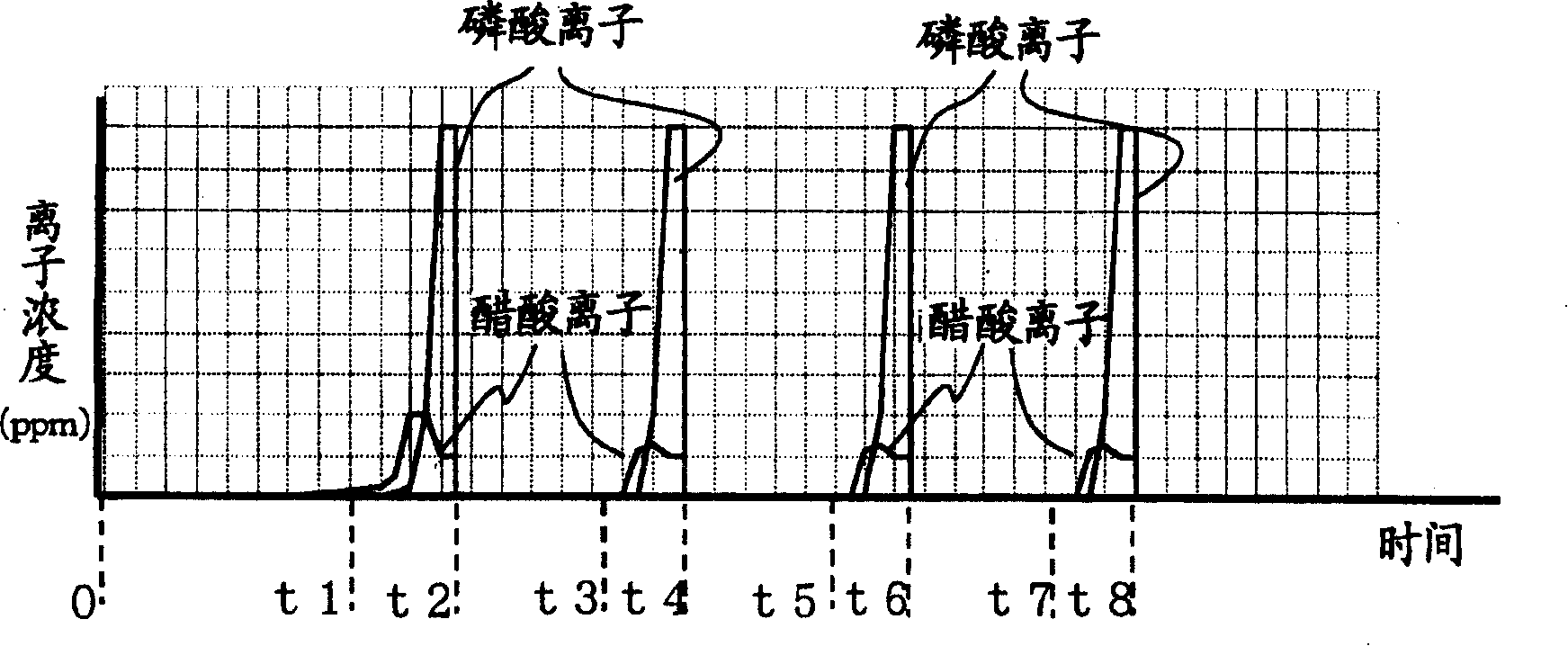Drainage disposal method and device
A drainage treatment device and drainage treatment technology, applied in the field of drainage treatment, can solve problems such as selective recovery of phosphate ions, low treatment efficiency, difficulty in selective recovery of phosphoric acid, etc.
- Summary
- Abstract
- Description
- Claims
- Application Information
AI Technical Summary
Problems solved by technology
Method used
Image
Examples
Embodiment 1
[0114]
[0115] In the first and second anion exchange towers, "Rebachitto MP62WS" of Bayer Chemical Co., Ltd. is respectively arranged as an anion exchange resin, and the respective superficial velocity SV=(treatment amount / resin amount)=10[1 / h], as For the wastewater to be treated, make the acidic wastewater containing 300ppm phosphate ions, 25ppm acetate ions, and 8ppm nitrate ions pass through the first and second anion exchange towers continuously at a flow rate of 3L / min, then wash with pure water, and then use 2 times the equivalent The 10wt% sodium hydroxide aqueous solution is regenerated to obtain the sodium phosphate aqueous solution.
[0116]
[0117] Through the above recovery, 80% or more of the phosphate ions in the wastewater can be recovered in the form of an 8 wt% sodium phosphate salt solution. In addition, the above-mentioned sodium phosphate salt was analyzed by ion chromatography, and the molar ratio of phosphorus to sodium was measured, and the resul...
Embodiment 2
[0120]
[0121] Wastewater treatment and recovery of sodium phosphate were performed in the same manner as in Example 1 except that the aqueous sodium hydroxide solution used for regeneration was 25 wt %.
[0122]
[0123] Through the above recovery, 80% or more of the phosphate ions in the wastewater can be recovered in the form of a 15 wt% sodium phosphate salt solution.
[0124] In addition, in the same manner as above, the regenerated solution was contacted with the cation exchange resin to form a sodium phosphate salt with a pH of 4.5, which was analyzed by ion chromatography, and the molar ratio of phosphorus to sodium was measured. The result was basically 1, thus confirming that the recovered Sodium phosphate is sodium dihydrogen phosphate.
Embodiment 3
[0126]
[0127] Wastewater treatment and recovery of sodium phosphate were performed in the same manner as in Example 1 except that the aqueous sodium hydroxide solution used for regeneration was 40 wt %.
[0128]
[0129] By the recovery described above, the phosphate ions in the waste water can be recovered as a 17 wt % sodium phosphate salt solution.
[0130] However, it was observed that the ion exchange resin reached 70 to 80° C. due to the heat generation when adding sodium hydroxide, and disodium hydrogen phosphate was very easily precipitated.
PUM
 Login to View More
Login to View More Abstract
Description
Claims
Application Information
 Login to View More
Login to View More - R&D
- Intellectual Property
- Life Sciences
- Materials
- Tech Scout
- Unparalleled Data Quality
- Higher Quality Content
- 60% Fewer Hallucinations
Browse by: Latest US Patents, China's latest patents, Technical Efficacy Thesaurus, Application Domain, Technology Topic, Popular Technical Reports.
© 2025 PatSnap. All rights reserved.Legal|Privacy policy|Modern Slavery Act Transparency Statement|Sitemap|About US| Contact US: help@patsnap.com



